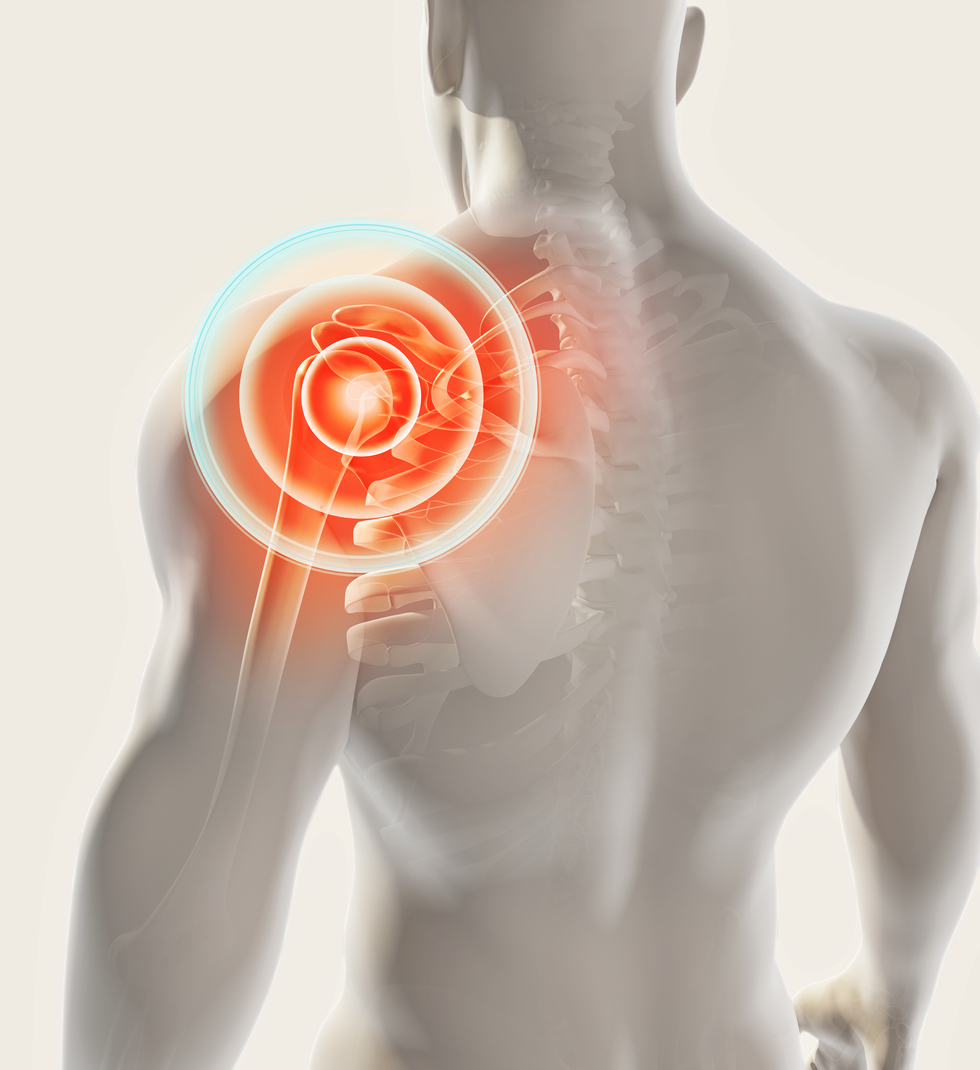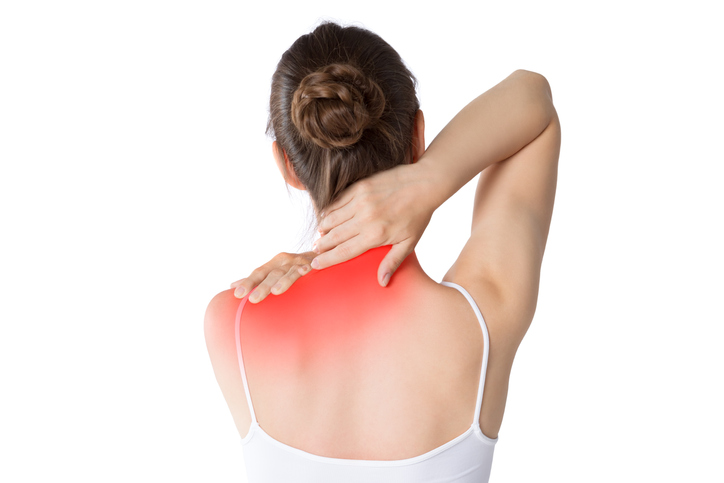Pain
Causes of Shoulder Pain

The shoulder is a complex combination of bones, joints, ligaments, muscles and tendons. Three bones meet at the shoulder to create a 90-degree angle: the clavicle (collarbone), scapula (shoulder blade), and humerus (upper arm bone). These three bones meet the sternum (breastbone) to create three joints: the glenohumeral joint, acromioclavicular (AC) joint, and sternoclavicular joint. The group of muscles and tendons in the shoulder are referred to as the rotator cuff. The rotator cuff stabilizes the shoulder and holds the bones in place. The rotator cuff is made up of four muscles: the supraspinatus, infraspinatus, teres minor, and subscapularis.
Some of the most common conditions that cause shoulder pain include the following:
- Arthritis in the shoulder develops when the cartilage in the ball and socket joints of the shoulder begins to deteriorate. Symptoms typically include pain, joint stiffness and reduced range of motion. Several types of arthritis can develop in the shoulder, including osteoarthritis, rheumatoid arthritis, post-traumatic arthritis and septic arthritis.
- Avascular necrosis is a condition caused by the reduction or interruption of blood supply to a bone. When avascular necrosis affects the bones in the shoulder, pain may gradually develop. Pain may intensify when weight is applied to the shoulder or when lying down on the shoulder.
- Brachial plexus injury involves acute damage to the brachial plexus (a bundle of nerves that send signals from the spinal cord to the shoulder, arm and hand). A brachial plexus injury typically occurs as a result of trauma. Symptoms vary depending on the severity of the injury but may include numbness, weakness, severe pain, or paralysis in the affected arm.
- Broken clavicle (collarbone) most commonly occurs from falling or trauma to the area. The clavicle is one of the most commonly fractured bones in the body. Symptoms include pain, swelling, increased pain during shoulder movement, tenderness, stiffness/inability to move the shoulder, or a bulge or deformation of the bone.
- Cervical radiculopathy occurs when a nerve root in the cervical spine becomes inflamed or damaged. Symptoms include numbness, altered reflexes, weakness, and pain, which can radiate from anywhere in the neck, down the shoulder, along the arm and to the hand and fingers.
- A dislocated shoulder is an injury that occurs when the humerus pops out of the cup-shaped socket of the shoulder. A dislocated shoulder is visibly deformed or out-of-place. Additional symptoms include swelling, bruising, intense pain, or an inability to move the joint.
- Frozen shoulder (adhesive capsulitis) is a condition that reduces range of motion in the shoulder. Over time, the capsule of connective tissue that surrounds the shoulder thickens and tightens, further reducing range of motion. Pain is also a symptom of a frozen shoulder.
- A humerus fracture is a fracture or break of the humerus bone (the bone in the upper arm). There are three types of fractures: proximal humerus fracture (which occurs near the shoulder), mid-shaft humerus fracture (which occurs in the middle of the bone), and distal humerus fracture (which occurs near the elbow). Typical symptoms include pain, swelling, bruising, arm deformity, or inability to move the shoulder or elbow.
- Myocardial infarction (heart attack) occurs when blood flow to the heart is blocked. Symptoms include feelings of pressure, tightness, pain, or a squeezing or aching sensation in the chest or arms that may spread to the shoulder, neck, jaw, or back. Nausea, indigestion, heartburn, abdominal pain, shortness of breath, cold sweat, fatigue, lightheadedness or dizziness may also occur.
- Polymyalgia rheumatica is an inflammatory disorder that causes muscle pain and stiffness, especially in the shoulders and hips. Additional symptoms may include joint pain, limited range of motion, malaise, fatigue, mild fever, loss of appetite, and depression.
- A rotator cuff tear can happen from an acute trauma/injury or degeneration due to aging. Depending on the cause of the tear, pain may not be felt immediately. However, a “snapping” sound or weakness in the upper arm may occur.
- Rotator cuff tendinitis is inflammation of the muscles and tendons in the shoulder. Tendons connect muscle to bone. Pain typically occurs with specific movements as the muscles rub against the inflamed tendons.
- A separated shoulder occurs when the ligaments connecting the clavicle and part of the scapula, specifically the acromion, are stretched or torn. This separation does not cause damage to the main joint of the shoulder. Pain at the top of the shoulder and a bump at the top of the shoulder by the clavicle are typical symptoms.
- Shoulder bursitis (subacromial bursitis) is inflammation of the shoulder bursa, the pocket of fluid that provides lubrication for the bones in the shoulder. Pain is typically worse at night and typically increases when moving the shoulder or when pressure is applied to the area. The joint may also feel achy or stiff and appear red and swollen.
- A shoulder sprain occurs when a ligament is stretched or torn. Symptoms include pain and stiffness (with movement), swelling, tenderness, pain, bruising or changes in skin color.
- A shoulder strain occurs when muscles or tendons are overstretched or torn. Symptoms typically include muscle spasms, pain around the shoulder, swelling, limited flexibility, and loss of range of motion.
- Thoracic outlet syndrome (TOS) occurs when nerves or blood vessels at the top of the thoracic outlet (a ring formed by the top ribs just below the clavicle) are compressed by the ribs, clavicle, or neck muscles. There are different types of TOS depending on whether a nerve, vein, or artery is the site of compression. Symptoms include neck, shoulder or arm pain, arm weakness, numbness of the fingers, and impaired circulation.






